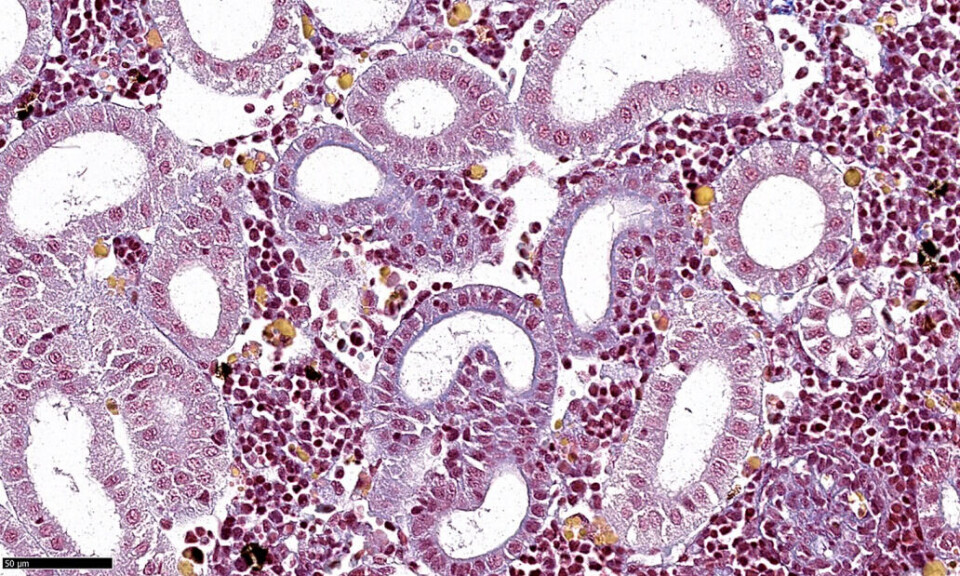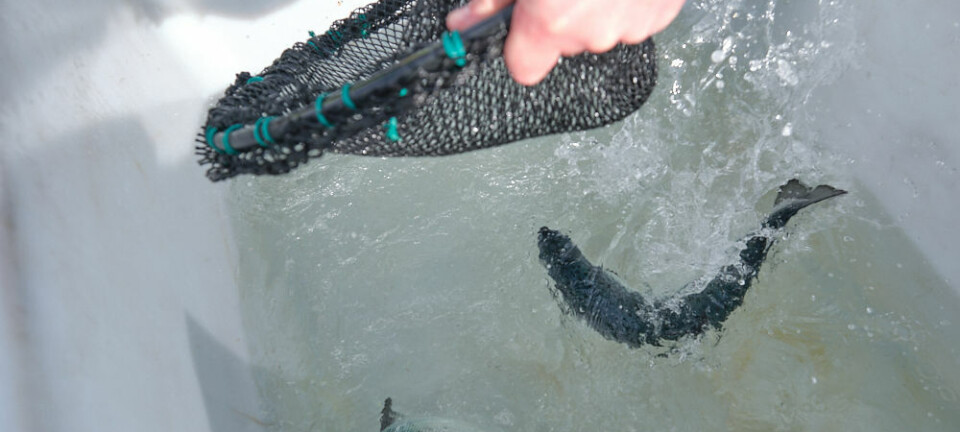
Research confirms gill poxvirus can also damage kidney and spleen
Researchers at the Norwegian Veterinary Institute have found further evidence that salmon gill poxvirus (SGPV) can not only affect the gills but can in some cases attack the haematopoietic (blood forming) organs, causing severe red blood cell breakdown.
In a previous study, researchers investigated the gill histopathology and transcriptome response of salmon sampled during a naturally-occurring outbreak of SGPV that occurred a few days after sorting at a land-based facility in the spring of 2017, with more than 200,000 Atlantic salmon pre-smolts dying with clinical signs typical of SGPV infection.
Preserved kidney and spleen from the same animals where gills had been investigated previously were included in the new study.
Extensive accumulation of red blood cell breakdown products and phagocytosis of red blood cells were seen in the salmon suffering from SGPV.
Antiviral responses
Moreover, differentially expressed genes exhibited an apparent organ-specific pattern, with a primary function involved in immune response, which was predominantly observed in the spleen and kidney. Additional antiviral responses, as well as coagulation and vascular function, apoptosis, and stress responses, were also detected in haematopoietic organs.
“In conclusion, salmon gill poxvirus disease (SGPVD) affects haematopoietic organs, causing red blood cell breakdown and organ-specific immune responses. Gene expression patterns highlight immune activation, antiviral defence, coagulation, and stress pathways in the spleen and kidney of salmon suffering from SGPVD,” wrote the researchers.
Read more in the open access paper, “Severe pathological and transcriptional changes in haematopoietic organs of salmon suffering from salmon gill poxvirus disease”, available here.























































